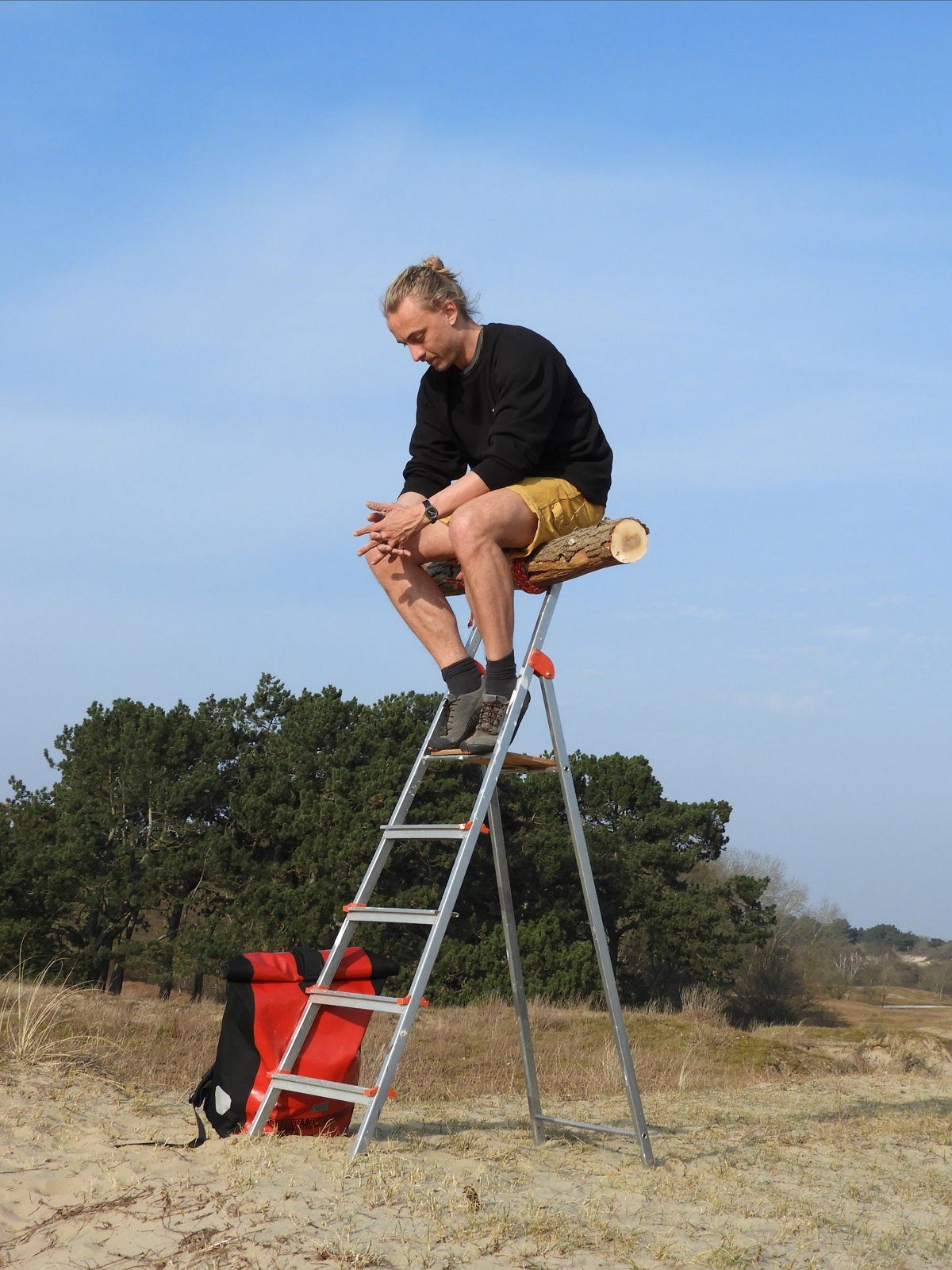
As a birdwatcher, passionate amateur ‘adventurist’ and a designer, I became intrigued in bringing the deep nature experiences that I’ve had on my travels closer to home. How do I access the same type of rich immersion without the same vast wilderness?
Graduation Project
Unleashing Animalship
Cormoradeship is a project about finding experiences of sensing to be an animal within your surrounding ecosystem. As one of my direct neighbours, the great cormorant has been the perfect guide to lead me to my ‘animalship’, since it clearly is a wild animal that knows how to live with the landscape that we both inhabit.
Reaching a feeling of animalship can help us to not just know about - but physically experience our entanglement with the landscape and our neighbours around us. Feeling to be part of something, to belong somewhere, will facilitate care for that environment.
These slow forms of outdoor recreation are focused on being present and developing sensitivity rather than completing achievements as is often the case when running, cycling, walking, climbing or taking photographs. There’s no ownership over nature, we don’t need to see things perfectly, it’s not about capturing, but about living the experience of being with nature, being equal and humble. About finding and embracing slowness.
It’s relatively easy to feel a deep, immersive connection to your surroundings in some far-away, remote wilderness but to experience this close to home, in well-regulated parks with footpaths and fences can prove to be a bigger challenge.
The Cormoradeship Collection is a set of tools that help to open up the landscape to our experience and allows to feel close to the area as one of the inhabiting animals, all from the ‘confines’ of the dedicated paths.
Please take a look at the Cormoradeship Collection Manual on www.unleashinganimalship.com to learn how you could unleash your own sense of animalship! Whose neighbour are you?
What's next?
The Cormoradeship project is a first exploration of a larger theme of designing for animalship. The challenge and aim that I set for myself here is one that I will continue to pursue. I am eager to continue to show and explore how this approach can lead to different outdoor gear, products and behaviour. To show how a wetsuit becomes a drying suit, a stool becomes a perch or a bench becomes a nest. Product design doesn’t have to be about ownership when a product can become a means, a tool for getting into a different mindset, a new way of experiencing.
DESIGN FOR RE-INCLUSION OF THE HUMAN ANIMAL
Thesis
How could we care for something that we don’t see and don’t feel related to? Design for Re-Inclusion of the Human Animal is aimed at the perception of living in nature and the belief that through directing the human mind and senses towards our direct natural environment, it will be easier to find intrinsic care for the planet. DRIHA fits in the design context of Nature Inclusive Design, a movement directed towards making room for more living nature in dense urban areas. DRIHA goes beyond this physical combination of nature and culture by exploring how to make the experience to be part of nature more accessible; to see ourselves as the Human Animal that is a small part of a ‘Haraway-esque’ interconnected web of life; a companion species. DRIHA takes inspiration from Waldeinsamkeit – an extremely rich experience of being connected to wilderness that originates from Romanticism – and tries to access similarly rich experiences of living in nature, even within a cultured environment, directing the deep romantic fascination for ‘unspoiled’ wilderness to a more accurate and current view of nature.